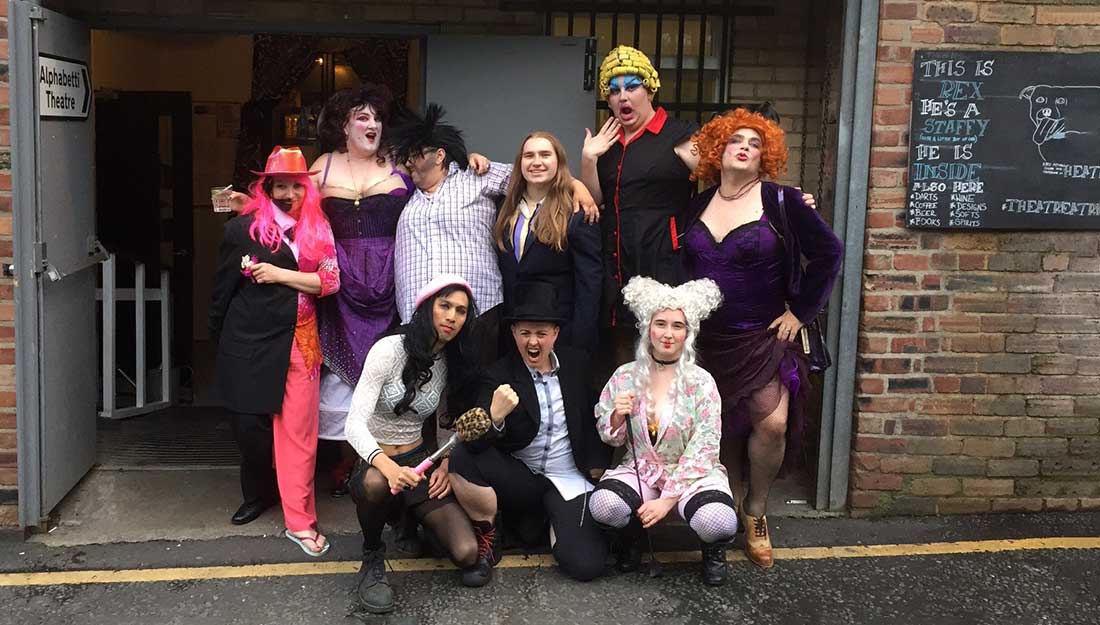What is drag?
Performance which explores / plays with / challenges traditional presentations, expressions of and ideas about, gender. Drag often, but not exclusively, includes exploring ideas about sexuality outside of heteronormative contexts.
Forms of Drag have existed throughout history and all over the world, being created by people of all genders and none. For example, in the UK, one tradition of men performing as female characters started in Elizabethan England, when the church banned women from appearing on stage. In Bengal, the folk-theatre tradition Jatra, has developed to include men playing female characters and visa versa.
What is a drag king?
Drag performers whose work focuses on or explores ideas about or presentations of masculinity. These performers are often (but by no means exclusively) female, non-binary or transgender. The term ‘drag king’ was first used in print in 1972, but there is a long history of female or gender non-conforming performers dressing as men or exploring masculinity in folk performance, theater, cabaret, opera, live art and burlesque. These performances have been referred to in a variety of ways (and take a huge range of forms) including ‘breeches roles’, en travasti, drag kings, male impersonation, leading boys and cross dressing. Celebrated performers include African American activist Stormé DeLarverie (who performed with Jewel Box Revue in the 1950s and 60s and was involved in the Stonewall riots), Japanese performance troupe The Takarazuka Revue (founded in 1913), Peg Woffington Irish performer who played male roles in theatre productions including works by Shakespeare during the 1730s, 40s and 50s, and Justin Bond, member of contemporary British drag troupe Drag Syndrome.


Images: DGA Collective. Stormé DeLarverie, photo: storme-delarverie.com